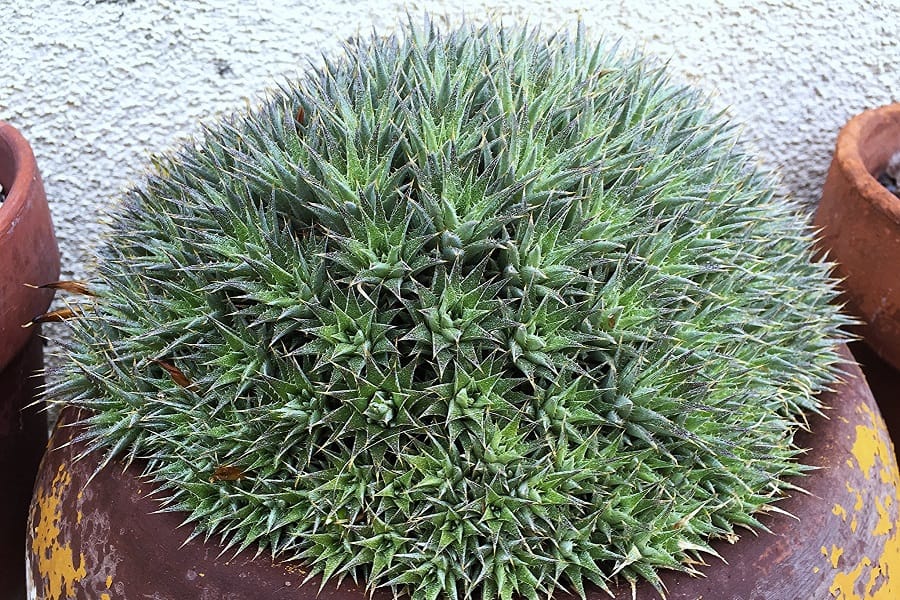Abromeitiella brevifolia: Characteristics and Care
Calling all plant lovers! Are you ready to unlock the secrets to growing the ultimate low-maintenance succulent? Look no further than the Abromeitiella brevifolia, your new green bestie. With its vibrant foliage and mat-forming growth habit, this little marvel will transform your space into an indoor oasis. Buckle up as we spill the beans on becoming an Abromeitiella pro!

Contents
About Abromeitiella brevifolia
Native to Bolivia and Argentina, the Abromeitiella brevifolia (formerly known as Deuterocohnia brevifolia) is a member of the Bromeliaceae family. As it matures, this succulent develops a striking mat-like appearance, making it an excellent choice for ground cover or a statement piece in your home. With its easy-going nature and minimal care requirements, even beginners can master the art of cultivating this beauty.
Related Post:
1,000 Types of Succulents [With Pictures]
Abromeitiella brevifolia Care Guide
Light: The Key to Vibrant Growth
Abromeitiella brevifolia thrives in full sun, craving several hours of direct sunlight each day. However, during peak afternoon hours, provide some shade, especially if you live in a scorching climate.
For indoor growers, position your potted pal near a sunny window or on a well-lit balcony. If you can’t provide enough natural light, supplement with a grow light positioned about 6-12 inches (15-30 cm) above the plant.
Watering: The Less is More Approach
Like most succulents, Abromeitiella brevifolia stores water in its fleshy leaves, making it drought-tolerant. During the growing season (spring and summer), water moderately, allowing the soil to dry out completely between waterings to prevent root rot. As temperatures drop, reduce watering frequency and avoid it altogether during the winter months unless your plant starts to shrivel.
Soil: The Perfect Drainage Dance
Well-draining soil is a must for your Abromeitiella brevifolia. Use a potting mix amended with coarse materials like bark, pebbles, or perlite to improve drainage. Maintain a slightly acidic to neutral soil pH between 6.1-7.5, with a minor alkaline range also tolerated.

Fertilizing: A Light Touch
At the start of the growing season, treat your Abromeitiella to a mineral-rich or organic fertilizer. If using a commercial fertilizer, dilute it significantly and apply half the recommended dosage to avoid overfeeding. One or two light feedings per year during the growing season should suffice.
Climate: The Goldilocks Zone
Abromeitiella brevifolia thrives in USDA hardiness zones 9b-11b, with ideal growing temperatures between 39°F (4°C) and 100°F (38°C). While it can tolerate a light frost in dry conditions, protect your plant from prolonged exposure to temperatures below 39°F (4°C) by bringing it indoors.
Pruning: The Renewal Process
Although Abromeitiella brevifolia grows at a leisurely pace, occasional pruning encourages fresh growth. Trim away any damaged or dead portions to maintain a tidy appearance.
Potting and Repotting: The Fresh Start
Choose a pot with drainage holes to prevent waterlogging. When roots start poking out of the drainage holes, it’s time to upgrade to a larger container with fresh, well-draining soil.
Pests and Diseases: The Watchful Eye
While generally resilient, Abromeitiella brevifolia can fall victim to pests like mealybugs, thrips, and aphids if conditions are favorable. Excessive humidity or oversaturated soil can also lead to issues like rot, which can be fatal if left unchecked. Keep a watchful eye and address any problems promptly to ensure your plant’s long-term health.

Abromeitiella brevifolia Propagation Guide
Increasing your Abromeitiella brevifolia collection is a breeze through propagation. While seeds are hard to come by, leaf and stem cuttings offer a reliable route to new growth.
Leaf Cuttings
- Gently twist a leaf off the mother plant, ensuring you get a piece of the stem attached.
- Allow the cutting to callous for 2-3 days.
- Optionally, dip the calloused end in a rooting hormone.
- Plant the cutting in well-draining soil, barely covering the calloused end.
- Water sparingly and maintain regular care until roots develop.
Stem Cuttings
- Using clean shears, take a 2-4 inch (5-10 cm) stem cutting from a mature plant.
- Allow the cutting to callous for 2-3 days.
- Optional: Dip the calloused end in a rooting hormone.
- Plant the cutting in well-draining soil, burying about 1 inch (2.5 cm) deep.
- Water sparingly and care for the cutting as usual until new growth emerges.
With a little patience and TLC, you’ll soon have a thriving Abromeitiella brevifolia family to admire!
